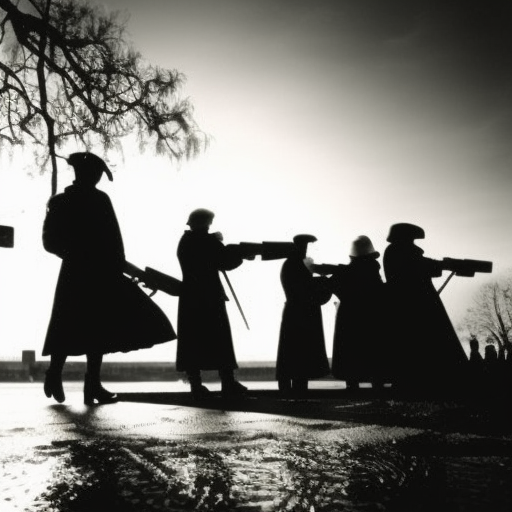Action of 18 February 1639: A Naval Battle during the Eighty Years’ War
The Action of 18 February 1639 was a naval battle that took place during the Eighty Years’ War between the Dutch Republic and Spain. The battle occurred off the coast of Dunkirk, and it was a significant engagement in the ongoing conflict between the two powers. The Dutch fleet, led by Admiral Maarten Tromp, successfully defended their convoy against a Spanish fleet commanded by Admiral Antonio de Oquendo.
The Context: The Eighty Years’ War
The Eighty Years’ War, also known as the Dutch War of Independence, was a conflict that lasted from 1568 to 1648. It was fought between the Dutch Republic, which sought to gain independence from Spanish rule, and the Spanish Empire, which aimed to maintain control over the Netherlands. The war was characterized by numerous naval battles as both sides sought to secure their maritime trade routes and protect their territories.
The Dutch Convoy and the Spanish Threat
In February 1639, a Dutch convoy consisting of merchant ships was sailing from the Baltic Sea to the Dutch Republic. The convoy was carrying valuable cargo, including naval supplies and luxury goods. Aware of the convoy’s importance, the Spanish fleet under Admiral Oquendo set out to intercept and capture the Dutch ships. Oquendo’s fleet consisted of around 20 warships, including galleons and frigates.
The Dutch Response: Admiral Tromp Takes Command
Upon learning of the Spanish threat, the Dutch Republic dispatched Admiral Maarten Tromp to protect the convoy. Tromp was an experienced naval commander and had previously achieved notable victories against the Spanish. He quickly assembled a fleet of 24 warships, including several powerful ships of the line, to confront the Spanish fleet.
The Battle: Dutch Victory and Spanish Retreat
On 18 February 1639, the Dutch and Spanish fleets encountered each other off the coast of Dunkirk. Tromp skillfully maneuvered his fleet to gain the advantage over the Spanish. The battle was fierce, with both sides exchanging cannon fire and attempting to board each other’s ships. However, the Dutch fleet’s superior firepower and tactical positioning allowed them to inflict heavy damage on the Spanish ships.
As the battle progressed, several Spanish ships were disabled or sunk, while others were forced to retreat. Admiral Oquendo’s flagship, the Santiago, was heavily damaged and had to be abandoned. In contrast, the Dutch convoy remained largely intact, thanks to the protection provided by Tromp’s fleet. The battle ended with a clear Dutch victory, as the Spanish fleet retreated and failed to capture any of the Dutch ships.
The Aftermath and Significance
The Action of 18 February 1639 was a significant victory for the Dutch Republic in their struggle against Spanish dominance. The successful defense of the convoy by Admiral Tromp bolstered Dutch morale and demonstrated their naval superiority over the Spanish. The battle also highlighted the importance of effective convoy protection and the role of naval power in securing trade routes during the Eighty Years’ War.
In conclusion, the Action of 18 February 1639 was a pivotal naval battle during the Eighty Years’ War. Led by Admiral Maarten Tromp, the Dutch fleet successfully defended their convoy against the Spanish fleet commanded by Admiral Antonio de Oquendo. The Dutch victory showcased their naval prowess and the importance of protecting trade routes during the ongoing conflict between the Dutch Republic and Spain.












